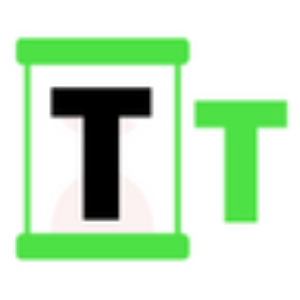Ethereum: Unleashing Explosive Institutional Crypto Adoption with US Stablecoin Bill
4 min read
BitcoinWorld Ethereum: Unleashing Explosive Institutional Crypto Adoption with US Stablecoin Bill Could upcoming U.S. stablecoin regulation be the catalyst that truly ignites institutional interest in the Ethereum ecosystem? According to Etherealize, the marketing and product arm focused on the Ethereum network, the answer is a resounding yes. They recently shared their perspective via an X post, suggesting that a potential U.S. stablecoin regulatory bill, specifically mentioning the GENIUS Act, could be significantly bullish for Ethereum. Why is the US Stablecoin Bill Bullish for Ethereum? The core argument presented by Etherealize is straightforward: clear regulation provides certainty. For large American companies and traditional financial institutions (often referred to as TradFi or Wall Street), this certainty is crucial for engaging with novel technologies like stablecoins. The passage of a comprehensive stablecoin bill in the U.S. is expected to: Open the door for widespread adoption of stablecoins by American businesses. Incentivize Wall Street firms to actively invest in and utilize stablecoins. Spur competition among financial players to leverage stablecoin technology. This increased activity and competition are seen as direct drivers of value and usage for the underlying networks where stablecoins operate, with Ethereum being a primary beneficiary. USDC’s Role in the Ethereum Ecosystem Etherealize specifically highlighted the position of USDC, one of the largest stablecoins by market capitalization. Circle, the issuer of USDC, currently has a significant portion – approximately 75% – of its USDC supply circulating on the Ethereum network. As Wall Street and other institutional players begin competing to utilize stablecoins following regulatory clarity, USDC is poised to be a major player in this race. Increased institutional demand for stablecoins like USDC directly translates to increased activity on the Ethereum network, where a large portion of USDC transactions and holdings reside. This reinforces Ethereum’s position as a foundational layer for the growing stablecoin economy. Institutional Crypto Adoption is Already Underway Etherealize pointed out that the flow of funds from traditional finance into the cryptocurrency space is already visible. Cryptocurrency exchange Coinbase, which is closely linked to the Ethereum ecosystem through its development of the Base Layer-2 network and its support for USDC, is reportedly seeing increased interest and investment from TradFi entities. A compelling example provided is JP Morgan, the global financial giant. JP Morgan is reportedly tokenizing bank deposits, essentially creating stablecoin-like representations of traditional money, on Base. Base is an Ethereum Layer-2 network, meaning it processes transactions off the main Ethereum chain for speed and lower cost but relies on Ethereum for security and final settlement. Etherealize emphasized that this activity, even on a Layer-2, is ultimately secured by and powered by ETH, the native currency of Ethereum. Etherealize Ethereum: The Digital Oil Analogy Bringing their argument to a powerful conclusion, Etherealize used a potent analogy. They stated, “But in the end, all roads flow through ETH.” They likened ETH to the “digital oil” powering the burgeoning digital economy. This analogy suggests that just as oil is fundamental to powering traditional industry and transportation, ETH is fundamental to powering the decentralized applications, financial services, and stablecoin transactions occurring on Ethereum and its connected Layer-2 networks. Regulatory clarity for stablecoins is expected to dramatically increase the demand for the underlying infrastructure and the asset (ETH) that fuels it. More transactions, more institutional use cases, and more development built on Ethereum-based stablecoins all contribute to increased demand for ETH, potentially driving its value and strengthening the network’s utility. What Does This Mean for the Future? The prospect of a U.S. stablecoin bill passing represents a significant potential tailwind for the Ethereum ecosystem. It signals a maturing regulatory environment that could unlock substantial capital and innovation from traditional finance. While challenges remain, including the specifics of the final bill and ongoing global regulatory developments, the view from entities like Etherealize is clearly optimistic. Increased institutional crypto adoption, fueled by regulatory certainty around stablecoins, could lead to: Higher transaction volume on Ethereum and Layer-2s. Greater demand for ETH as gas and a store of value. More sophisticated financial products and services built on Ethereum using stablecoins. Enhanced legitimacy and mainstream acceptance of the Ethereum network. This potential influx of institutional activity, particularly centered around stablecoins like USDC and developments like JP Morgan’s tokenization on Base, reinforces the narrative that Ethereum is evolving into a critical piece of global financial infrastructure. Concluding Thoughts Etherealize’s perspective provides a compelling case for why U.S. stablecoin regulation could be a major positive catalyst for Ethereum. By providing regulatory clarity, the bill could pave the way for significant institutional adoption, driving competition for stablecoins and increasing activity on the network. The examples of USDC’s dominance on Ethereum and JP Morgan’s move onto Base underscore the existing connections between traditional finance and the Ethereum ecosystem. As the digital economy continues to grow, ETH, seen as its “digital oil,” stands to benefit immensely from this increased institutional engagement. To learn more about the latest Ethereum trends, explore our articles on key developments shaping Ethereum institutional adoption. This post Ethereum: Unleashing Explosive Institutional Crypto Adoption with US Stablecoin Bill first appeared on BitcoinWorld and is written by Editorial Team

Source: Bitcoin World



